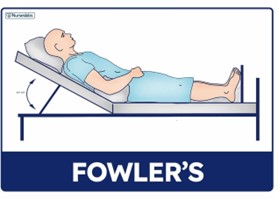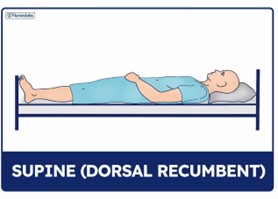A nurse is evaluating a nursing student's understanding of positioning clients. Which of the following statements indicates a need for further teaching?
Positioning a client in good body alignment and changing the position regularly (every 3 hours) and systematically are essential aspects of nursing practice.
"Frequent change in position helps to prevent muscle discomfort, undue pressure resulting in pressure ulcers, damage to superficial nerves and blood vessels, and contractures."
"Any position, correct or incorrect, can be detrimental if maintained for a prolonged period."
"For all clients, it is important to assess the skin and provide skin care before and after a position change.
The Correct Answer is A
This statement indicates a need for further teaching because it is not accurate. Positioning a client in good body alignment and changing the position regularly are essential aspects of nursing practice, but the position should be changed more frequently than every 3 hours. It is generally recommended to reposition clients at least every 2 hours to prevent pressure ulcers and other complications. The other options (Frequent change in position helps to prevent muscle discomfort, undue pressure resulting in pressure ulcers, damage to superficial nerves and blood vessels, and contractures; Any position, correct or incorrect, can be detrimental if maintained for a prolonged period; and For all clients, it is important to assess the skin and provide skin care before and after a position change) are accurate statements and do not indicate a need for further teaching.


Nursing Test Bank
Naxlex Comprehensive Predictor Exams
Related Questions
Correct Answer is C
Explanation
This is the primary role of the nurse in the informed consent process. The nurse witnesses the client's signature on the consent form, verifying that the client is signing voluntarily and that they understand the procedure, risks, benefits, and alternatives.
Correct Answer is B
Explanation
This statement demonstrates that the nurse appropriately evaluated the goal because it shows that the client was able to meet the goal of stating two positive aspects of rehab therapy by the end of the week. The other statements indicate that the outcome was either not met, incomplete, or only partially met.
Whether you are a student looking to ace your exams or a practicing nurse seeking to enhance your expertise , our nursing education contents will empower you with the confidence and competence to make a difference in the lives of patients and become a respected leader in the healthcare field.
Visit Naxlex, invest in your future and unlock endless possibilities with our unparalleled nursing education contents today
Report Wrong Answer on the Current Question
Do you disagree with the answer? If yes, what is your expected answer? Explain.
Kindly be descriptive with the issue you are facing.
